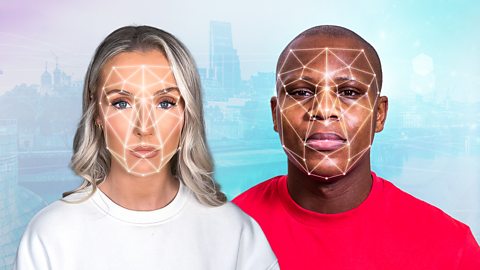AI in recruitment: The lowdown
When you are applying for a job, you may come across artificial intelligence (AI) â without necessarily realising it. AI is essentially a set of algorithms that can respond and react to learned inputs and data. AI and other software can be used by recruiters to scan CVs, to conduct video interviews and in game-based assessments.
According to a 2020 report by British software company Sage, almost a quarter of businesses surveyed were currently using AI for recruitment, and that number was expected to double the following year. Itâs not necessarily something to worry about, but it is helpful to know how to navigate the system and get past the bots to your dream job!
CV scanning

As you can imagine, companies often receive hundreds of CVs, which take time to sift through. Algorithms are used to streamline this process â and make hiring someone simpler and faster for the employer. According to research by website Jobscan, 98% of Fortune 500 companies (the biggest companies in the United States) use these applicant tracking systems (ATS). ATS can scan CVs for specific keywords, match a candidateâs experience to the job description, and rank applicantsâ CVs against each other.
Paul Gratrick is Head of Operations for the Careers Team at the University of Liverpool. He says most companies will use software, like ATS, during the early stages of the recruitment process, and a human being will focus on the later stages like the final interviews or assessment centres. So, how can you make sure you are including the right things in your CV to get past these systems?


Top tips
Ryan and Ana are students who also work as career coaches at the University of Liverpool. These are their CV top tips:
- Include a summary of who you are, your education, and list work experience or volunteering in reverse chronological
- Use a conventional CV format, with standard words for headings like âwork experienceâ and âsummaryâ
- Search for the keywords you can include from the job description
- Make sure you spell the companyâs name correctly â and check all your spelling, punctuation and grammar.
Automated video interviews

Automated video interviews (AVIs) are another recruitment tool used by employers. HireVue, a worldwide interview technology company, says almost 25 million AVIs have been conducted through its platform so far. Another interview technology platform, Modern Hire, says it saw a 40% increase in users in 2019.
With AVIs, candidates must answer a set of pre-recorded questions remotely (recorded by either a real person or a robot). The applicant must record and upload their answers within a set timeframe. These answers are analysed by a person at the company â or by an algorithm.
This kind of artificial intelligence is reading things like your voice, word choice and sometimes even facial expressions. There have been concerns around bias when a computer is analysing an applicantâs responses. The issue seems to be that a computer programme can only be as objective (ie: unbiased) as the person who programmed it in the first place. This can apply to many algorithms, not just those used in AVI.


Top tips
Here are Ryan and Anaâs top tips for preparing for an AVI:
- Look at the job description and write out some likely interview questions
- Practise recording your answers: read the question on a text document for 30 seconds, record yourself giving the answer on your computer camera, then watch it back and use that to build up your skills
- Maintain eye contact and good posture â as you would in a face-to-face interview
- Make sure the room behind you is appropriate and as plain as possible.
Paul adds that if you have any concerns that automated video interviews may disadvantage you, you can get in touch with the employer and ask for âreasonable adjustmentsâ, so that the interview process suits your needs better. If you have concerns about bias, it is best to raise your concerns with the company you are applying to.
Game-based assessments

Another form of technology employers are using are recruitment games and assessments. There are psychometric tests, which measure your characteristics through a series of multiple-choice questions. There are also âsituational judgement testsâ, which measure how you would respond in a real-life work scenario, and tend to be tailor-made to suit the company and its values. Your reactions and results can be measured using artificial intelligence.


Top tips
Here are Ryan and Anaâs top tips:
- Practise things like psychometric tests online
- Instead of paying, use your school, college or university careers service to access recruitment games and other tests online for free
- Be honest and be yourself when answering situational judgement tests â you canât practise the exact answers but you can practise the style of questioning, and doing it against the clock!
Social media accounts

Social media can be used in different ways when it comes to AI and job seeking. You can register with an online job platform, which will use algorithms to match you to jobs that are nearby and fit in with the skills and experience you have listed as well as your interactions with other candidates and employers.
At the same time, employers are using social media accounts to work out potential employeesâ personalities, so itâs important to think about what you are presenting online.
Paul says this is nothing to worry about and employers are not trying to catch you out, but it can be a useful tool for graduate recruiters, due to the sheer volume of applications they receive. Often it is a human being looking at these accounts. But AI can also be used to find data on social media and analyse things like what words you use and your communication skills. In a survey of over 8,000 employers and hiring managers globally in 2018 almost a third said AI was helping to deliver the best candidate matches.


Top tips
Here are Paul, Ryan and Anaâs tips for using social media to your advantage:
- Follow the companies and influencers you are interested in and keep up with industry news
- Send a personalised invite to connect with graduate recruiters or someone doing the job you want
- Be aware of what youâre putting online: donât post content you think might be inappropriate, or make sure you have secure privacy settings
- Consider using some platforms for personal use, and others specifically for the outward-facing professional you.
Where next?

To learn more about the use of AI in workforce decisions, check out Computer Says No: Should tech decide who gets jobs? on iPlayer.


How can I explain my skills to employers?
Learn how to demonstrate your abilities using the STAR method.

Five top tips for acing online interviews
Advice for smashing virtual interviews and insight from a successful interviewee.

More from Bitesize Careers
Hear from young people about the world of work.
